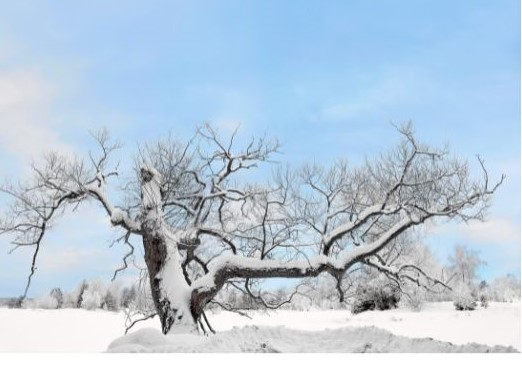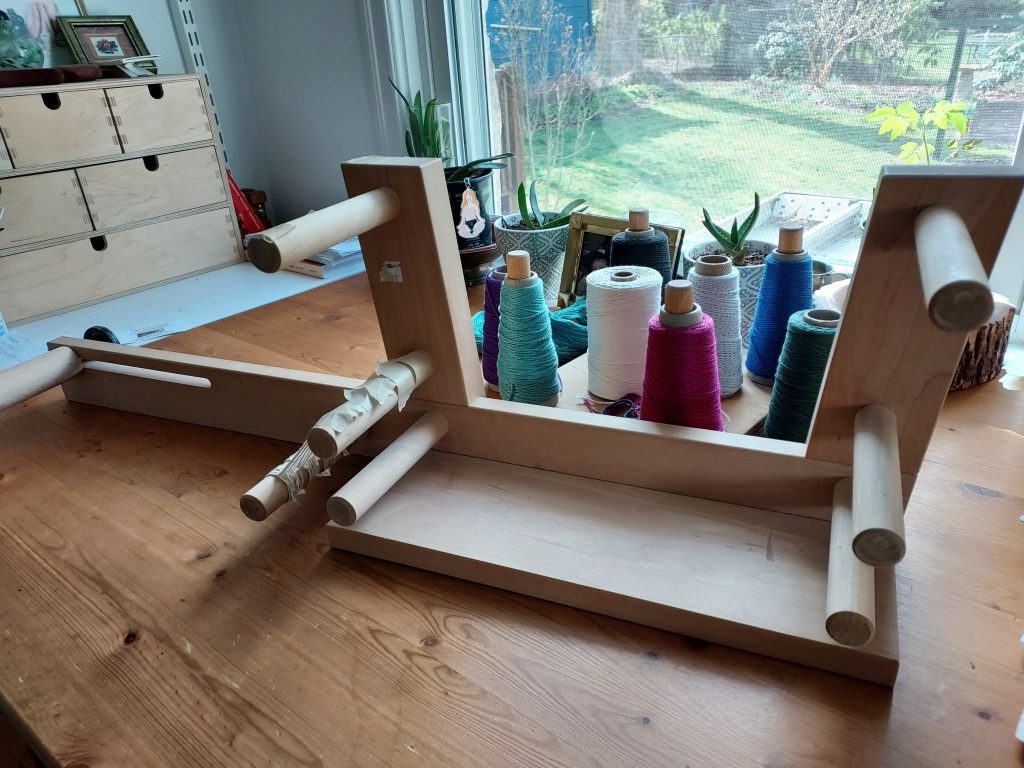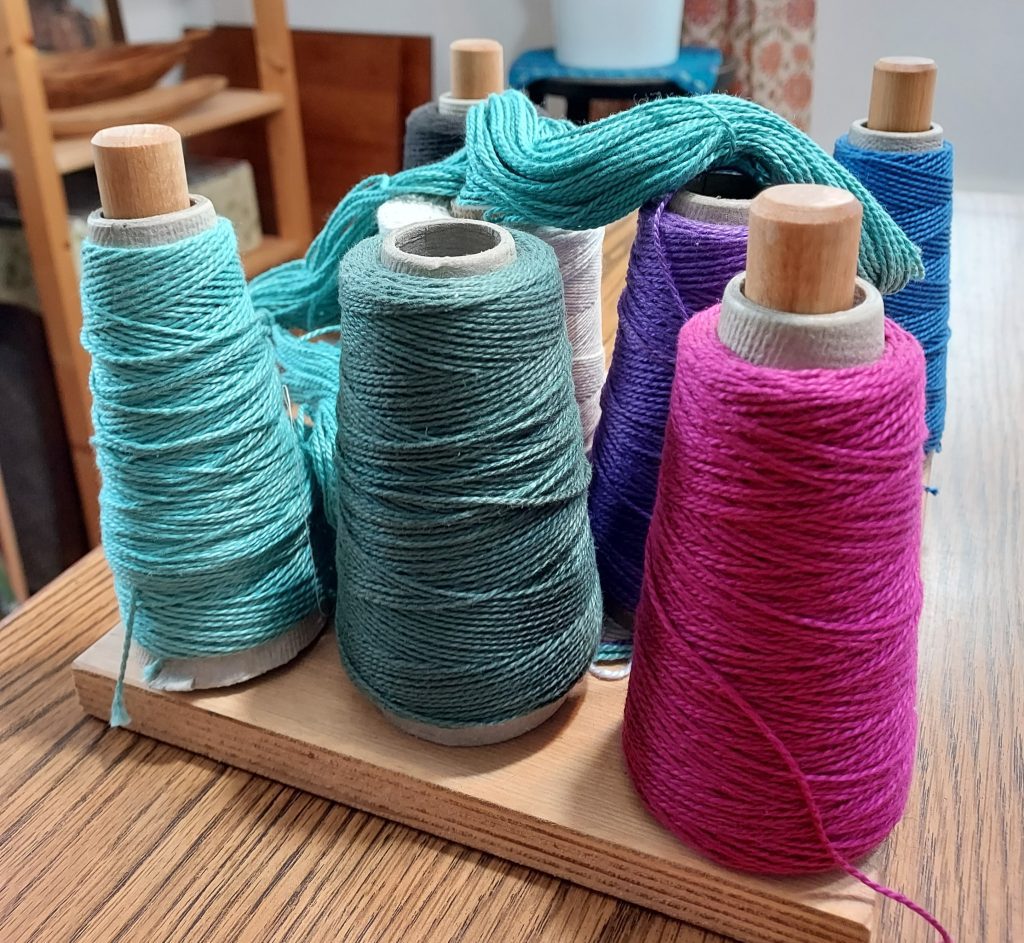~~~~~~~~~~~~~~~~~~~~~~~~~~ # ~~~~~~~~~~~~~~~~~~~~~~~~~~

On the cusp between winter and spring, I am sitting here wondering what makes something beautiful. When it snows here in the mountains, leaving a layer of white brightness over everything outside, even the ugly oak leaf hydrangeas, with their spindly arms and crumpled brown leaves, take on a sparkly kind of glory. On a nasty, gray day, as I shiver and wish fervently for the thermometer to deliver better news, I try to find some redeeming value in the weather as I walk the dog in the drizzle. Perhaps it’s in the quiet attitude of the polite Carolina rain spattering my umbrella that I find a measure of loveliness. And the desire to scurry home and crank up the oven and bake some chocolate chip cookies. There’s always a bit of silver lining those drippy clouds!
In our retirement years, my husband and I have been indulging in creating beautiful things. He has a woodshop in the basement where he turns out exceptional pieces of craftmanship. He does this without power tools, either on a foot-powered lathe he constructed, or by carving with various hand tools. He has amassed a pile of scrap wood from downed trees (natural drops or chain-sawed) which he scavenged while out and about on our daily walks. We have lived here long enough for him to have established a reputation as that guy who wants your tree trimmings. Neighbors and friends notify him when they plan to take down damaged limbs or a dying tree from their yards. This winter my woodcarver is taking a sabbatical from collecting yard cast offs for the sake of marital harmony. I need to be able to walk through the basement without tripping over tree carcasses.

My own interests have settled on weaving as my spring creative outlet. The Hobbit House is too small to accommodate a floor loom, so I rummaged around between the pieces of wood in the basement to find my diminutive inkle loom, hiding amid its woody brethren. It’s been down there collecting dust for the past five years, so I brought it up to my studio for a cleaning and as an object of contemplation. What will I make? That’s as far as I had gotten before images of my disastrous knitting project flashed through my mind. That particular debacle is still hanging in a gift bag on the doorknob of my studio door, where I can ignore it until I catch a glimpse of the pretty blue yarn condemning me from it’s nest inside the bag. I never finished the scarf I had chosen to knit a few years ago. Would this weaving project suffer the same level of abandonment?
An inkle loom makes bands of woven material, which can be sewn together to make a wider material or which can be used to decorate the edges of other fabrics. The one fact that might save my next project from languishing in a closet is I have used this loom before to make some pretty nice things. It’s not a difficult craft to accomplish once the loom has been warped. “Well, what is that?” you may be asking. Here’s your weaving 101 class, and it’s pretty simple because I’m not a champion weaver or even a half-baked one, so my knowledge is at a perfunctory, kindergarten level. Material has threads that inter-connect from two directions. One, the warp, is attached to the loom, all set up to receive the weft, which is passed through every other warp thread to make a solid connection of fabric. The weaver passes the weft through the shaft that separates the threads of warp about five billion times and that’s why machines now do this magic. Unless a person finds it fun; then it’s a handmade craft of a thing interwoven with patience and fortitude.

I dug out two books on inkle weaving from my crafty book library to help me to brush up on how to warp the thing without crying or damaging personal property. Just as a side note, most of the weaving classes offered by the John C. Campbell Folk School in Brasstown, North Carolina ask that the class participant be able to warp their own loom. I’m sure this eliminates the crybabies, hand wringers and assistance needers who might otherwise take up too much time with their inexcusable ignorance. Anyone who has done any weaving can certainly appreciate that move. The warping of the inkle is a simpler yet still mystifying endeavor. And that is why I have never taken a weaving class at John C. Campbell Folk School.
Inkle weaving is really simple if you are making something that’s only one color. Since it’s a warp-faced weave (meaning you see the color of the warp thread in the finished product) all the warp is that one color and so is the weft. But, to make fancy patterns, one must first have a glass of wine and possibly some Girl Scout Cookies, followed by reading the warping directions six times and then putting it all away until tomorrow. As a semi-nonprofessional weaver, I recommend giving it a good week of wine/cookie meditations before attempting to follow the warping instructions. Once you get it up and going, the rest is your average daily monotony. Until you get 30 or so rows past a glaring mistake.

If the weaver is brave enough to try making a cute pattern, any mistake made is viscerally visible. These are the artist’s choices when encountering a blunder of some magnitude: 1) Pretend you don’t see it and keep on weaving, 2) Undo all the rows that came after the gaff and reweave (or worse, re-warp) it the correct way or 3) Let it slide until you can do a post-weaving repair. Since I don’t want to make something obviously wonky and I have no patience for undoing my previous work, I usually go with option 3. I equate this choice with the Japanese art of kintsugi–filling the cracks of broken pottery with gold, allowing the artiste to embrace the imperfections in a socially acceptable, non-wasteful way.
The whole concept is genius. My woodworking man has adopted it into his shop aesthetics. Tree branches are not the most perfect of substances to work with as they age, and often crack when least expected, as in toward the end of turning a piece of peach wood into a bowl on the lathe. If the bowl can be saved with some glue and other substances crammed into the cracks, he will glamorize the flaws and finish it off. These rescued items are just as gorgeous as the ones with no flaws. It’s all a matter of how one perceives the beauty in things.

Weaving, on the other hand, is not conducive to glue and sawdust repairs. Here the concept of kintsugi must be embraced in a general manner. I have mostly become skilled at hiding the whoopsie in a way that, unless the viewer of my work is some kind of professional weaver (or an instructor at John C. Campbell Folk School), the fix masquerades as part of the intended woven flow. In other words, it was supposed to be this way! Other than the above exceptions, no one is the wiser. With my skills in patching, tucking, over weaving and fiber shuffling intact, I began to warp my loom for a simple three-tone pattern of adjacent chains with single ends. I hope that impresses you. The wine and cookies were locked away after the pre-warping process because I needed my wits about me for following the warping pattern. It’s much harder to fix those mistakes.
I stopped before I made much progress. Kintsugi is one thing, prudence is another. It had been several years since I created beauty on this loom. Having given up the wine and cookies, my mind was clear on what I had to do to ensure minimum wonkiness and maximum mediocrity. I needed to do a practice run with some remnants of yarn I found stashed in the weaving box in the basement. Though I despised the delay, I knew I could whip up a small band of little value, thereby giving myself some measure of sureness toward making an inkle with a more complicated design. I was afraid I would screw it up and waste the newly purchased cotton perle. Moving back to square one really bothered me, but I didn’t want to have to kintsugi-ize too much in one piece, so my visionary ego capitulated to my pragmatic self and I started over, vying for some measure of quality in the next woven piece.

The very act of making something of intentional splendidness is, in itself, a kind of seductive meditation. When I use the creative part of my brain, I am able to envision what the end product should look like, and, so inspired, begin the work of building something sublime. There’s joy when it’s here in my hands and I am able to savor its manifestation, including the imperfections which make it unique. One does not need to be a greatly skilled or accomplished artist in order to feel this. One need only to get out the loom or the cast-off tree branch or pencil and paper and get started on that project. It will become a thing of beauty despite any flaws or cracks, or maybe even because of them. I try to focus on that thought each time I go hiking through the mini forest in my basement in search of the raw materials necessary for firing up my own creative process. I’m going to make something.
Time to get cracking,
Cheryl
Need inspiration? Quote of the week has got you covered.




But, to make fancy patterns, one must first have a glass of wine and possibly some Girl Scout Cookies, followed by reading the warping directions six times and then putting it all away until tomorrow. As a semi-nonprofessional weaver, I recommend giving it a good week of wine/cookie meditations before attempting to follow the warping instructions. IT WILL HELP WITH THE DAILY MONOTONY of anything. lol
Well, this is true, but I eventually like to get something accomplished! I was thinking of you and all my other artsy friends when I wrote this!
Sounds very complicated, but I’m sure you will make something beautiful!! Cheers!!
Warping a loom is daunting at first. It looks very complicated, but is pretty simple once you get going. Tedious is the word I would use as it can take awhile to do it and keep track!
Weaving, blogging, cooking, and puppet making, to name a few. You are a woman of many talents! Is there anything you’ve hesitated to try?
I considering a reupholstering class at AB Tech. I love a challenge.
You certainly have a way with words! And yarn ????????
Thanks Annie! It’s not like making puppet hair, so we’ll see.